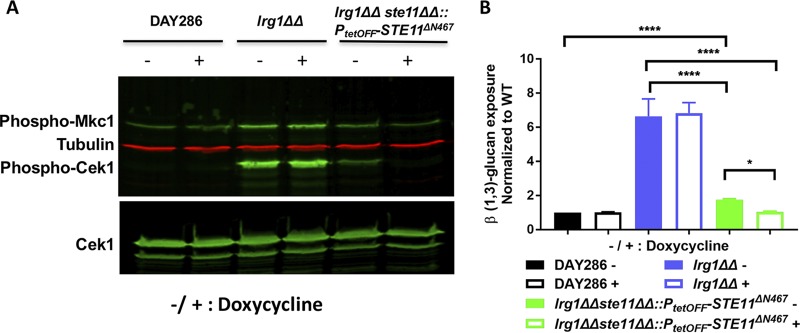FIG 4.
Disruption of LRG1 causes increased Cek1 activation through the Ste11 MAPKKK. (A) One STE11 allele was deleted in the lrg1ΔΔ mutant using the well-established SAT1-flipper method. The second STE11 allele was replaced by the PtetOFF-STE11ΔN467 allele through homologous recombination. The Candida cells were treated with 0.5 μg/ml of doxycycline overnight at 30°C, followed by subculturing in fresh YPD medium for 3 h at 30°C and growth to the log phase with or without doxycycline. Western blotting was performed with anti-phospho-p44/42 antibody for phosphorylated Cek1 and Mkc1. Anti-tubulin antibody was used to detect tubulin, and anti-Cek1 antibody was used to detect total Cek1. (B) The Candida cells were cultured overnight with or without doxycycline, followed by immunofluorescent staining with anti-β (1,3)-glucan antibody and PE-conjugated secondary antibody. The stained cells were measured by flow cytometry to quantify β (1,3)-glucan exposure. Strains were tested three times with 2 technical replicates each time, and statistical analysis was performed using one-way ANOVA. ****, P < 0.0001; *, P = 0.0142. Statistical comparisons between the lrg1ΔΔste11ΔΔ::PtetOFF-STE11ΔN467 strain and the wild-type strain with or without doxycycline were done by ANOVA in the absence of the lrg1ΔΔ strain.

